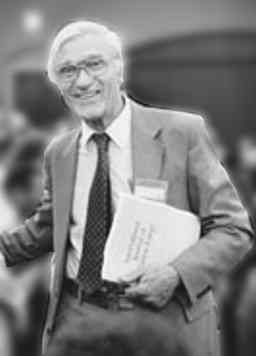- Mass, Charge, and Current: The Essence and Morphology (1991) [Updated 8 years ago]
- A Way Out of the Quasar Redshift Shambles (1989) [Updated 1 decade ago]
- Redshifts and the Plasma Focus (1989) [Updated 1 decade ago]
- The Morphology of the Electron (1985) [Updated 1 decade ago]
- The Pinch Effect Revisited (1977) [Updated 1 decade ago]
- Mass, Charge, and Current: The Essence and Morphology (1991) [Updated 8 years ago]
Laboratory experiments in 1954 ? 1956 with magnetized plasmas produced spontaneously arising, integrity-possessing structures called plasmoids [Bostick, Phys. Rev. 104, 292 (1956); ibid. 106, 404 (1957); idem, Sci. Am. 1957, (Oct.), 81; idem, Elec- tromagnetical Phenomenon Cosmical Physics (1AUSymp. No. 6) (Cambridge University Press, 1956), p. 87; idem, Rev. Mod Phys. 30, 1090 (1958); W. L. Laurence, New York Times (12 Dec. 1956), p. 1]. Recognition ensued that these plasmoids were force-free, minimum-free-energy structures (like spherical droplets) carrying their electric currents in slender, force-free, tensile-strength-possessing vortex ?strings? (the Beltrami geometry) [E. Beltrami, Rendiconti del Reale Institute Lombardo, serie 11, Tomo XXII, p. 121 (1889); Bostick, W. Prior, L. Grunberger, and G. Emmert, Phys. Fluids 9, 2079 (1966), idem, I.E.E.E. Trans. Plasma Sci. PS-14, 703 (1986)]. There followed an ansatz to conceptualize the electron morphologically as a stringlike submicroscopic force-free ?plasmoid? constructed of self-gravitating E and H vectors [Bostick, W. Prior, L. Grunberger, and G. Emmert, Phys. Fluids 9, 2079 (1966); idem, I.E.E.E. Trans. Plasma Sci. PS-14, 703 (1986); Bostick, Gravity Research Foundation Essay Contest, 1958 and 1961; idem, Fusion 2, 42 (May 1978); idem, Int. J. Fusion Energy 3, 9 (1985)]. This ansatz has yielded a high-fidelity, stringlike, equilibrium fermion model, the cornerstone of which is electric charge in the form of an extremely slender electrically charged, electromagnetic fiber which is equilibrated (net mass = 0, a stringlike ?black hole?) by its own self-gravity, and whose electromagnetic energy is 2.5 ? 1018 GeV. This fiber naturally assumes the helical configuration of a ?screen door spring,? and it is connected end to end to form a deformable torus which becomes the fermion. We respectfully nominate this string as a candidate for the elusive, much-sought-after role of ?superstring.? The concept of a living l'chaim stringlike or filamentary electron instead of a mathematical point electron yields several succulent dividends beyond that of existentiality: the transverse deformation waves on the filament are identified with and * of quantum mechanics (the de Broglie waves). All mass, momentum, and energy are electromagnetic in character. The short-range, strong force is shown to be essentially the electromagnetic effect of telescoping two filamentary ringlike, stringlike fermions over one another. There are no embarrassing self-energy infinities begging for renormalization. The electroweak force is explained in a simple way. Gravitation and gravitons are shown to be an electromagnetic phenomenon. Even the short-range repulsive gravitational term that has recently surfaced experimentally has a rational explanation. Unification comes naturally and painlessly through the commonality of electromagnetism.
- A Way Out of the Quasar Redshift Shambles (1989) [Updated 1 decade ago]
- Redshifts and the Plasma Focus (1989) [Updated 1 decade ago]
- The Morphology of the Electron (1985) [Updated 1 decade ago]
- The Pinch Effect Revisited (1977) [Updated 1 decade ago]
The article presents a broad survey of research associated with the pinch effect, i.e., the self-constriction of the column of a deformable conductor carrying an electric current. Research conducted from 1954 to 1963 centered on developing a scheme which would utilize axial magnetic fields, RF fields, and conducting walls to stabilize the pinched plasma column while part of the fuel reacts; these schemes are described. Work during the 1964-1974 period dealt with developing the plasma focus and self-consistent field patterns for diamagnetic and paramagnetic vortex filaments. Various theories concerning the mechanism and mode for deuteron energizing and directing in the pinch effect and plasma focus are outlined.



